Web @ 25, W3C @ 20 – Future Direction of the Open Web Platform
Last week I reflected on role of W3C in standardizing the Open Web Platform. We have come a long way, but we have a long way to go. In this third of four posts I explore how the Open Web Platform will continue to expand. The future Web Platform will expand as today’s Platform finds new usages and applications. Some of the drivers are based on factors related to society, some are technical capabilities, and some are needs that arise from different applications. Here is a description of why we will see continued innovation in the Web Platform.
Web and Society
Generational
The Web is a technological invention. Then non-technologists found it useful. They didn’t grow up on the Web, they didn’t learn about it in school – it was a black-box tool set to communicate with others.
Millenials have grown up on the Web. Even those in non-technical careers utilize web technology and understand it. Today, millions (or billions) of people think about how to expand the impact of the Web. With more people will come more innovation and more impact.
Privacy and personal control
Recent revelations about surveillance on the Web have heightened a growing concern about the sharing and discovery of personal information and the question of how people protect their privacy. Many technologies exist today to ensure security of data flow and personal control of private information. But in our “innocence of youth” we are not focused on the usage of these technologies. In some cases the technologies are too inconvenient, sometimes we don’t use them out of ignorance, and sometimes we may not fully grasp the dangers.
As we mature, and we see real damage – we will lose our innocence. This will result in a new generation of technologies for the Web. We will standardize protections. We will make them easy-to-use. Invention will be required to balance the benefits of a “knowledgeable Web” that caters to users by knowing them and an “all knowing Web” which makes us uncomfortable with what is known about us.
Web for All
Less than half the planet has access to the Web. We need to fix that.
Everyone who joins the Web adds to the Web. The Web is the reflection of the goals, aspirations, and obstacles of everyone on the planet. Everyone is different and brings in a different perspective. Entire demographics, countries, languages, and cultures that are missing from the Web is a detraction for all of us. Let’s get everyone on the Web and let’s all benefit.
Core infrastructure
Closing the gap with native platforms
There is a constant tension between innovation and standardization. While much innovation happens simultaneously with standardization, individual platform providers are often the first to introduce new features. This has been particularly true in recent years when new families of devices achieved access to the Web. Each time that a new device was added to the mix, it had unique proprietary features that needed to be introduced into the standard infrastructure.
This is seen in the area of mobile applications. Mobile Apps are popular, and vendors have rushed to get new features added to their platforms and ensure a seamless experience of these Apps running on their platforms. This has extended to both the technology of the mobile device, as well as the ecosystem for procuring, downloading, installing, and managing those Apps. This is an area where there are gaps between the Open Web Platform and native platforms: in areas such as performance, richness of API set, payments, and buying experience.
This provides a roadmap for additional features that are required for the Open Web Platform. Today, the OWP is behind in certain areas - to be expected given the rapid pace of innovation in mobile apps over the past several years. We are focused on closing the gap, and will get their, driven by industry’s imperative for interoperability. The world of devices will only grow richer and more diverse, increasing further our need for interoperable solutions.
Applications become infrastructure
It is the nature of computer platforms that they form a common basis for applications that leverage the platforms; but over time – these applications sink into the platform. Commonly we have seen this in operating systems which began by providing low-level primitives to manage resources, but evolved into database systems, telecommunications systems, browsers, word processors, etc.
For the Web, video was once thought of as an application, today it is a core part of Web infrastructure.
There is a growing set of popular applications on the Web: search, entertainment, social networking, cloud computing, e-commerce, Web payments, and publishing are a few. Each of these are candidates to become part of standard Web infrastructure over time. With such an expansion of the OWP, new, more powerful, higher-level applications will arise.
Web of Things
Everyone is talking about the Internet of Things.
We need to enhance the Web architecture to accommodate the Internet of Things. At one level, all of these “Things” will represent different classes of objects with different properties. We will need to standardize a vocabulary to reason about these “Things”; search for them; and have linked information about them. In that way, they will be more useful in Smart Cities and Smart Factories.
Not all of these Things will browse the Web but we are certain to want to access their capabilities through our browsers. We will find Web browsers or servers in new classes of objects - from specialized personal medical equipment to home energy management systems. Every time we have expanded the set of devices browsing the Web it has introduced new requirements for Web architecture, and this promises to be no exception.
Providing a URI for a larger set of items in the Web of Things, and building browsers for specialized devices is only the first impact of the Web of Things on Web Architecture. Once Things are a part of the Web, new Web based applications will arise. In Smart Cities, we will expand the OWP so that citizens and service providers can have rich applications on the Web informing them about the status of the cities. For Smart Factories, we will expand the OWP so that factories can enhance their flexibility in managing all of the Things that flow through the factory.
Thus Web of Things both provides new core infrastructure, as well as driving new application areas. Here are additional significant changes to the OWP that we expect will come from new application areas.
Application areas
Web enhancements are driven by the needs of particular application areas. Typically, an application area might require a unique platform underpinning, which over time becomes relevant to other application areas.
We have only just begun: Social, MOOCs, Automotive, Finance
Some Web application areas are young. Applications such as social networking and MOOCs are only around for a few years. We don’t know how they will evolve but history suggests that as they mature there will be further innovation and development of platform capabilities.
The area of social is particularly interesting. Looking at some recent M&A (e.g. Instagram, WhatsApp) we see that users are becoming less interested in a single monolithic social application, but would like to have different social networking applications for different purposes. As these proliferate, we will see requirements for platform componentry for these applications to interoperate - and become part of the standard.
Areas such as cloud computing have been around for a while, but need greater focus in terms of standardization. Rich cloud capabilities are available from many vendors, open source stacks provide technology for cloud computing, yet true standardization has proved elusive. More successful standardization efforts will drive further progress for cloud computing.
Other areas are just now emerging. Conversations about Web based standards for automotive systems and Payment systems are just beginning, but there is a long way to go. But there is huge potential to move much of the information processing needs for both Automotive and Financial Services onto a standard interoperable platform. Each will have its own flavor. For Automotive, for example, ensuring that there are no distracted drivers will be key. For financial, interfaces will be required to integrate with existing financial systems.
A Web of Style
An extreme study in future impact is seen in the Publishing industry. Above, we characterized the Web as a new Publishing mechanism – one that offered everyone the possibility of being an author, and unprecedented mass distribution. There is a rich history of printed works and many well-established approaches to layout and typography were not available to the early Web. Fast forward to 2014. Today much of what previously could be done uniquely with specialized publishing tools can be done on the Web platform. Where the Web is still deficient, we often know how to make the necessary progress.
We refer to this as a Web of Style. Different types of publishing: notably catalogues and magazines have required a high degree of styling. This was easier in a physical medium than on the Web - since on the Web we need to have the levers to make it possible to have the “styled” page look authentic on a range of browsing devices. Today’s technology is close to achieving device independent styling, and it will continue as an important driver for CSS in the years to come.
Imagine what happens to the publishing industry when everything that was previously done using unique technologies is done on the Web. Add to that the advantages of the Web: linkiness, new business models, massive distribution, everyone an author, and the ability to run interoperably on a wide range of devices – and we see impact on an industry like never before.
Entertainment and personal publishing
Right behind the publishing industry is the Entertainment industry. There are age groups in certain countries who are more likely to watch TV or movies on their PC through the Web than on television sets. Since that is a young demographic, this trend will increase. When the Web becomes the universal platform for the creation, distribution, and consumption of content – the entertainment industry will look totally different than it looks today.
To summarize, there are huge drivers that will continue to enrich the OWP.
A measure of the greater opportunity for the Web is this richness of the community driving Web standards. In my four years at W3C I have been privileged to observe rapid growth of this community. The way that the community has adapted - become more agile - to meet this challenge is the focus of my next post.
Next week: Creating an agile Web standards ecosystem.


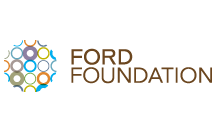
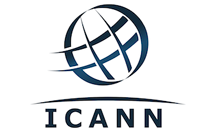
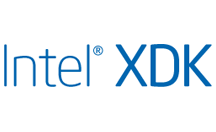
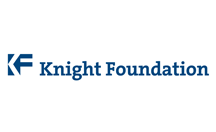
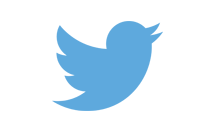
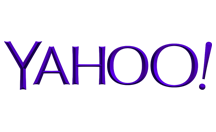


Comments
luigi bertuzzi
About “Generational”.
Please consider a revised outset, such as:
“The Web is a technological invention enabled by a social endeavor.”
Computers were invented before the Web. Some non-technologists started learning [collectively] how to deal with them in the late ‘60ies.
I have a gut feeling that, by not mentioning how computing evolved in some research environments, an opportunity is missed when writing that the Web came about as a “black-box tool set to communicate with others”.
Between 1989 and 1993 interpersonal “communication” via technology had an opportunity to start being dealt with by Standardization Bodies as [new] “process” work, in addition to [their usual] “technical” work.
Unfortunately, times were not ripe for such an opportunity to be seized.
The consequences are now almost impossible to sum up. The only way I could think of addressing them is worded in this [mock-up] question to Vint Clerf [prompted by a Google Take Action event] ...
A 35 year old magazine about mountains - i.e. “Le Dolomiti Bellunesi” http://altitudini.it/le-dolomiti-bellunesi/ - is about to go online. The Dolomites are now World Heritage http://whc.unesco.org/en/list/1237 . Potentially, then, the Internet version of a magazine about a natural resource should be “socially executable”, in addition to being “readable & watchable”.
However, the acquisition of its “executable” quality is at risk of being handled as a technical and a marketing issue only.
How could such a risk be avoided, if possible?
Luigi
luigi bertuzzi
_Risk management enables [fragmentation] risk avoidance_ .... too bad Standardization Bodies failed to hear this type of message, when the implications of open system interconnection on application portability and [social] interoperability were investigated, technically only http://www.sciencedirect.com/science/journal/09205489/15/6